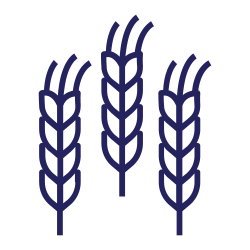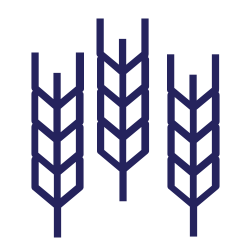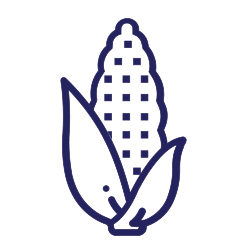Section Title
Fertilizer Considerations in a Wet Spring – Challenges and Opportunities
- Whole Farm
By John Heard
Following last year’s drought, much of Manitoba badly needed recharge of soil moisture reserves. The unusually large amounts of rain and snow received this winter and spring will now delay spring seeding and may force some farmers into alternative options for spring nitrogen (N) application.
Advances in fertilizer sources and application methods provide many options to help farmers deal with these challenges. Another challenge is the uncertain supply of fertilizer due to current supply chain disruptions, so options may be limited on fertilizer availability and source.
Related Production Resources

Water demand differs by crop type. Understanding crop water requirements can be beneficial when building rotations, making fertilizer rate decisions, and making crop and landscape management choices. Read More

Waterhemp and Palmer amaranth are pigweeds in the genus Amaranthus. While more common members of this genus such as redroot pigweed are familiar to Manitoba farmers, waterhemp and Palmer amaranth are new to Western Canada. Not yet identified in Saskatchewan… Read More

We are nearing the end of another season. However, there are still decisions to be made that can help set the farm up for success in the following year. In addition to evaluating decisions made throughout the year, we can… Read More

Manitoba farmers are well aware of the destructive abilities of wireworms. They feed below ground on many different crop types, causing early season plant stress. Feeding also results in thinning plant populations and reduced yield. Read More

Early season weed control can be key to optimizing yield and giving your crop a good head start. Even small weeds compete with your crop for moisture and nutrients while also acting as a host for insects and diseases. Controlling… Read More

In Manitoba, field corn is grown for grain or silage production. The majority of grain corn produced in Manitoba supplies the ethanol and feed industries, but a small portion is sold to the distillery in Gimli. Silage corn is used… Read More

This is Part 3 in a three-part series on managing extremes of moisture. Part 1 focuses on soil properties and definitions and Part 2 focuses on crop selection, pests and fertility. If you haven’t already, we recommend reading Parts 1… Read More

This is Part 2 of a three-part series on managing extremes of moisture. Part 1 focuses on soil properties and definitions. If you haven’t already, we recommend reading Part 1 first. Part 3 focuses on field activities. Read More

This is Part 1 of a three-part series on managing extremes of moisture. Part 2 focuses on crop selection, pests and fertility, and Part 3 focuses on field activities. Read More

Water demand differs by crop type. Understanding crop water requirements can be beneficial when building rotations, making fertilizer rate decisions, and making crop and landscape management choices. Read More

Waterhemp and Palmer amaranth are pigweeds in the genus Amaranthus. While more common members of this genus such as redroot pigweed are familiar to Manitoba farmers, waterhemp and Palmer amaranth are new to Western Canada. Not yet identified in Saskatchewan… Read More

We are nearing the end of another season. However, there are still decisions to be made that can help set the farm up for success in the following year. In addition to evaluating decisions made throughout the year, we can… Read More

Manitoba farmers are well aware of the destructive abilities of wireworms. They feed below ground on many different crop types, causing early season plant stress. Feeding also results in thinning plant populations and reduced yield. Read More

Early season weed control can be key to optimizing yield and giving your crop a good head start. Even small weeds compete with your crop for moisture and nutrients while also acting as a host for insects and diseases. Controlling… Read More

In Manitoba, field corn is grown for grain or silage production. The majority of grain corn produced in Manitoba supplies the ethanol and feed industries, but a small portion is sold to the distillery in Gimli. Silage corn is used… Read More

This is Part 3 in a three-part series on managing extremes of moisture. Part 1 focuses on soil properties and definitions and Part 2 focuses on crop selection, pests and fertility. If you haven’t already, we recommend reading Parts 1… Read More

This is Part 2 of a three-part series on managing extremes of moisture. Part 1 focuses on soil properties and definitions. If you haven’t already, we recommend reading Part 1 first. Part 3 focuses on field activities. Read More

This is Part 1 of a three-part series on managing extremes of moisture. Part 2 focuses on crop selection, pests and fertility, and Part 3 focuses on field activities. Read More

Water demand differs by crop type. Understanding crop water requirements can be beneficial when building rotations, making fertilizer rate decisions, and making crop and landscape management choices. Read More

Waterhemp and Palmer amaranth are pigweeds in the genus Amaranthus. While more common members of this genus such as redroot pigweed are familiar to Manitoba farmers, waterhemp and Palmer amaranth are new to Western Canada. Not yet identified in Saskatchewan… Read More

We are nearing the end of another season. However, there are still decisions to be made that can help set the farm up for success in the following year. In addition to evaluating decisions made throughout the year, we can… Read More
Resource Details
Field Issues
- Soil
Related Research Projects
Manitoba Crop Alliance’s research program invests in research that will make every Manitoba farmer member more productive and sustainable, providing data to help members make decisions for their operations.





